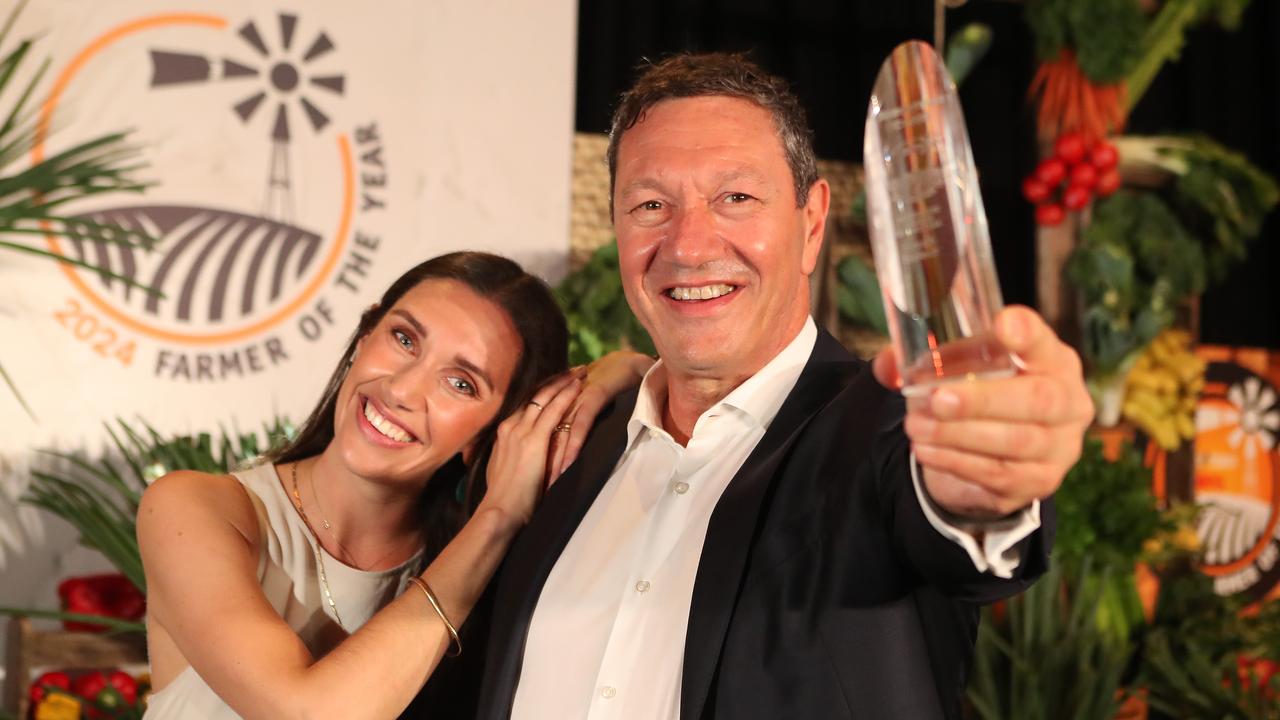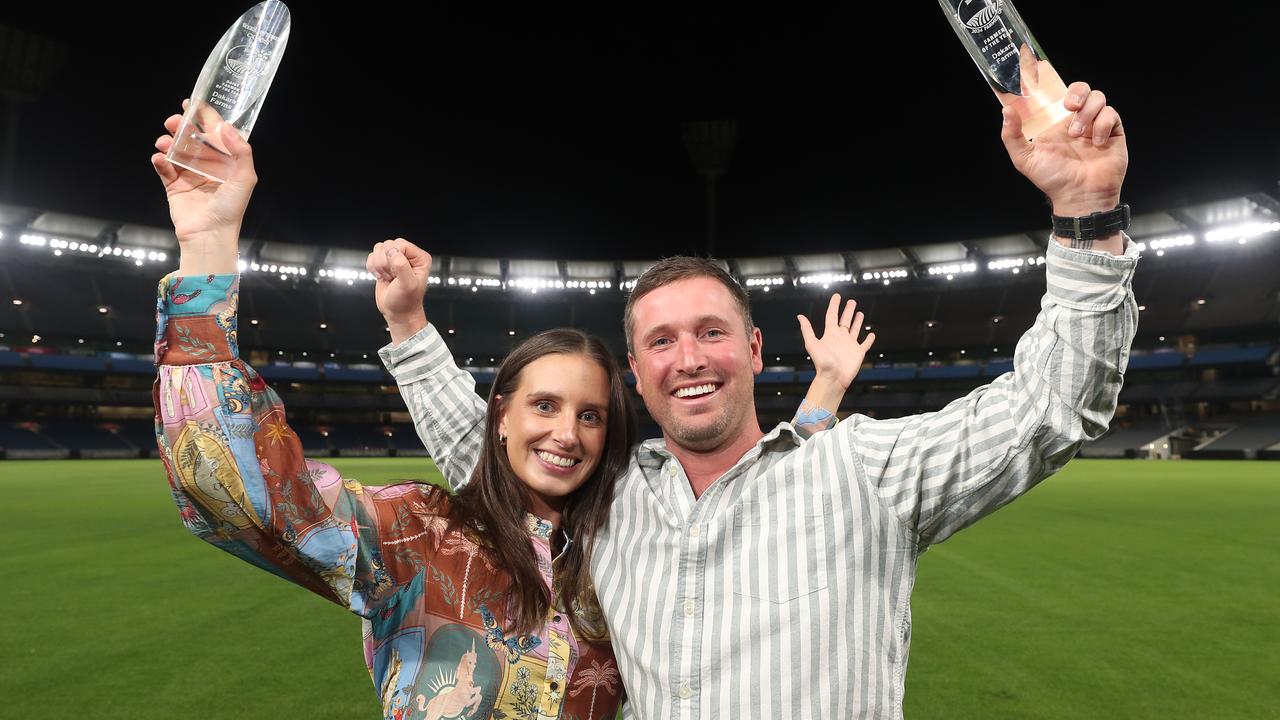Tingulla Farms win hay race
THE odds were tough, but entering the field of racehorse hay supply set a Katunga couple on a true course.

THE odds were tough, but entering the field of racehorse hay supply set a Katunga couple on a true course.
What's on the menu this spring racing season?
For one farming family from northern Victoria the more-traditional caviar and champagne is out - replaced by your everyday lucerne and oats.
And they wouldn't have it any other way.
Meet David and Jo Steinfort. Former dairy farmers from Katunga who are now making a meal out of Melbourne's racehorse industry.
In a few short years they have built up their Tingulla Farms business to supply 25,000 hay bales a year to racing stables in Mornington, Cranbourne and Pakenham.
The Steinforts moved to Katunga 17 years ago from Melbourne, where David worked at his family's chemical business, supplying disinfectants and detergents to hospitals, and Jo was a nurse. They were by no means newcomers to farming - while they lived in the city they owned a property at Mirboo North in Gippsland, on which they ran prime lambs.
On moving to Katunga, the Steinforts started out dairy sharefarming with Jo's uncle. Keen to make their own start in the industry, they soon sold their Mirboo North property and bought a 61ha dairy farm.
"We were on that farm for about seven years and that gave us our apprenticeship dairy farming," Jo said.
Restricted by the size of the farm, the Steinforts made "the next step up" and added another 81ha of land down the road. For years they milked 130 "mixed breed" cows and ran a calf-rearing enterprise.
But David said the 12-year drought and poor milk prices took a toll.
"It's not the hard work ... why go into debt for a milk factory?" Jo said.
"We made a lot of money when we sold the farm, but during the ride we never made enough money."
The Steinforts sold 40ha, including the dairy and the house. Electric fences were pulled out and "we hinge-joined (the fences of) the whole farm".
"Low-care" self-shedding Wiltipolls and goats were introduced.
The Steinforts run about 300 ewes that lamb in winter. One ram is joined to 50 ewes. This year no replacement ewes were kept, with all lambs sold over-the-hooks to JBS Swift at Cobram for the winter market at about $5/kg carcass weight.
They also dabbled in goats, which Jo described as "fantastic animals" but the feral goat market "knocked out any farmed goat sales".
The Steinforts were looking around for other enterprises and settled on hay "because this area's a great hay area" and "it's something we can do as a family without spending every day off the farm".
David said cracking the outer-metropolitan racehorse hay market was no easy feat.
"Initially it was knocking on a lot of doors and leaving sample bales for them to try," he said.
"The one-truckload delivery market is very, very tightly held. You can't infiltrate that market - it's impossible."
The ability to supply consistent top-quality hay at a cheaper price than fringe feed stores eventually won the stables over.
David said hay stores retailed bales for $20-$25 each while his commanded $15-$16 delivered. The Steinforts can produce hay for $2.50 a bale "including diesel, string, water, phone calls, the computer - everything".
"The aim is to make 100 per cent mark-up on it but sometimes we have to take a bit less of the gap because the trainers are really price sensitive," David said.
"We are supplying to racehorses that run in the Melbourne Cup, so it's got to be pristine, prime beautiful hay," Jo said.
"Every trainer uses different types of hay. Those guys don't like ryegrass, they don't like clovers - there is too much sugar in the ryegrass and too much protein in the clover.
"A lot of them like straight oaten hay because it's highly palatable to the horse, providing you cut it and get good harvesting conditions."
The Steinforts now have 30 hay customers on their books, and while in recent years they've relied on bought-in hay to help fill their orders, this season they'll have enough to meet demand.
Twice a week David and Jo rise at 4am for the drive to Melbourne in their six-tonne truck loaded with 240 bales to deliver to the stables, which range in size from 20 to 90 horses.
"The 40-horse stables are the best payers and they would use 40-50 bales a fortnight," David said.
Six drops to stables can take anywhere from 2 1/2 to 3 hours.
"It's just four hours down, four hours back," David said. "If you get back in 12 hours you're doing well, but it's usually 13 or 14."
David said in previous years the Steinforts had supplied about 8000 of their own bales to the business, with the bulk "bought in from other farmers in the area". This year that meant they bought about 18,000-20,000 bales at about $7-$8 a bale.
"We've been building our market up until this year when the irrigation setup has been perfected, the paddocks are all clean and the crops have been sprayed out," he said.
"So we will make the majority of hay this year rather than buying it in."
During the hay season, the Steinforts get six cuts of lucerne and anywhere from two to four cuts of the other varieties, which include shafftal rye and subterranean clover.
Watering the crops requires about 400 megalitres of water a year.
The Steinforts have invested in state-of-the-art machines and infrastructure, including a new hay shed that can house 16,000 bales.
"One baler can churn out 450-500 bales in an hour. When the conditions are right we can bale for two or three hours and get a fair bit done," David said.
"We're all mechanical, we've got a bale accumulator behind the baler so everything comes out in a pack of 10," David said.
"We spent a fair bit of money on machinery and equipment because we've got to get smarter. We're handling squares of hay, that's a physical job you can do when you're young but not now, so we had to get a bit smarter to make it sustainable so David and I can do the job on our own without relying on outside help," Jo said.
David said a probe was used to determine moisture levels in the hay with the ideal range from 10 to 14 per cent.
"You can't have mould - mould will kill a racehorse," David said.
"Some lucerne we get up to 15-16 per cent moisture and the trainers love it but if you're going to keep that enclosed it in your hay shed it could go a bit musty.
"Everything has to be perfect to last the season and pass the trainer's scrutiny."


